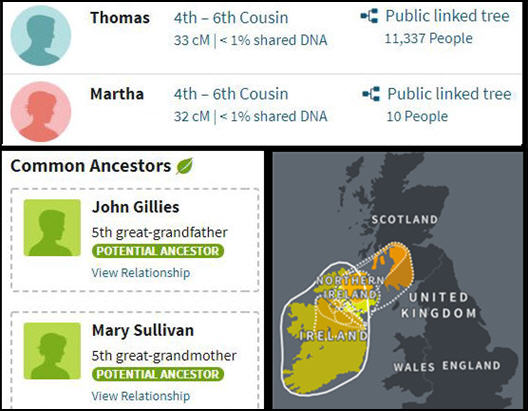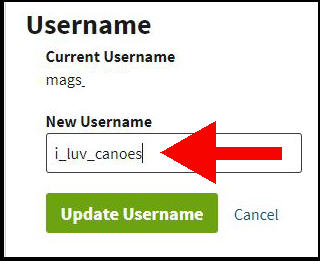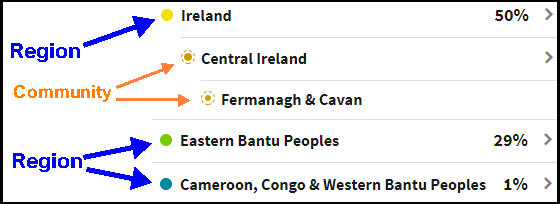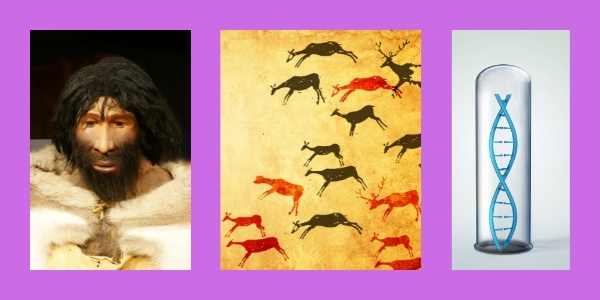Ultimate Guide To Ancestry DNA
When you buy a DNA kit from Ancestry.com, you get access to several types of features on their website:
- Ethnicity estimates
- DNA relatives and their family trees (if they choose to have a public tree)
- Online family tree software
This guide focuses on your ethnicity estimates and researching your family history through your DNA relatives.
If you haven’t yet bought an Ancestry DNA kit, read the first half of this overview. The second half is a guide on making the most of the Ancestry DNA features.

Table Of Contents
- What To Consider Before You Buy An Ancestry DNA Kit
- Anonymity Privacy And Big Surprises
- How Does Ancestry Compare With Other DNA Testing Companies
- What Ancestry Does Not Provide (And Other Companies Do)
- Buying An Ancestry DNA Kit
- Your Ethnicity Results
- Researching Family History Through DNA Relatives
- Using Ancestry DNA To Build Your Family Tree
- Using Your Ancestry DNA Results On Other Websites
- More Strategies For Making The Most Of Your Ancestry DNA
- Understanding The Fundamentals Of DNA
- Frequently Asked Questions
What To Consider Before You Buy An Ancestry DNA Kit
Are you researching your family history? One of Ancestry’s massive benefits is access to your DNA relatives and their family trees.
Other DNA testing companies offer a similar service of access to relatives amongst their customers. Ancestry’s main advantage over its competitors is that it has sold the most consumer DNA kits to date.
Read more in our article on the size of DNA databases in the industry.
But the total number of sales is a bit abstract. More importantly, how many DNA relatives are you likely to see with an Ancestry kit?
My survey of acquaintances found 34 thousand to be the average number of DNA matches on Ancestry. You will have less if both your parents are not of European heritage.
How far back can an Ancestry DNA kit go?
The ethnicity estimates go back about two to three hundred years. Your DNA relatives go out to about 8th cousin, which is nine generations back. That’s about 225 years.
By the way, Ancestry’s marketing team makes much bigger claims. They mention a thousand years or more.
Who is behind the company?
Ancestry.com has changed hands several times. It had a public listing for a while but is currently in private ownership. The majority owner is an equity investment firm.
By the way, Ancestry is not owned by the Mormons. That’s an assumption I see popping up occasionally! Check out our article on who owns Ancestry.
Anonymity, Privacy, And Big Surprises
Some people worry that their DNA results could be sold or shared with other institutions or private companies.
Ancestry.com has strict controls on privacy and gives you the choice to opt in or out of participating in research projects.
And what about your DNA relatives? Can they see your full name and contact details? That is completely under your control.

But you have to know how to set up your display profile to achieve the privacy your want.
Family secrets and surprises
Another common question is whether unknown close relatives could pop up on Ancestry.
Well, yes, that can happen. If you have a half-brother or sister who has tested with Ancestry, then this DNA kit will show up in your list of relatives.
However, the exact relationship may not be immediately clear. It’s important to understand why that’s the case.

How Does Ancestry Compare With Other DNA Testing Companies?
Check out our in-depth comparisons between Ancestry and its competitors. These are detailed reviews that look at the full range of features that each company provides.
What Ancestry.com Doesn’t Provide (That Others Do)
Are you looking for different types of DNA tests? Ancestry doesn’t test for Y-DNA or mitochondrial DNA.
If that’s what you’re looking for, you should take a look at FamilyTreeDNA.
Health risk reports
Ancestry used to provide detailed health analysis, but they discontinued that product. Wwe’ve got the skinny in our article on what happened to Ancestry Health.
If your priority is health reports, then Ancestry’s major rival is probably the way to go. You can read more in our comprehensive guide to 23andMe.
Buying An Ancestry DNA Kit
The standard price for an Ancestry DNA kit is $99 in the United States. The prices are similar in other countries. The company also has sales at different times throughout the year.
They also offer an add-on of Traits reports in the U.S.
When you purchase a kit, you’ll receive a small tube for your spit sample. If you have any trouble, check out our article on tips to make enough saliva for your DNA test.
Once you’ve sent back the kit, it will take up to a couple of months for your DNA results to be processed. We keep track of customer wait time.
Your Ethnicity Results
The Ancestry analysis compares your DNA to a reference database of DNA samples from around the world.
My ethnicity estimates pinpoint my Irish heritage to two counties in a small country. This is remarkably accurate.

My non-European estimates aren’t so good, but they’ve gradually improved. Ancestry updates the ethnicity estimates about once a year.
Researching Family History Through DNA Relatives
The biggest benefit of testing with Ancestry is that many of your DNA relatives have family trees on the website.
Some will have spent years researching and gathering documents and photos. This can open up rich new branches in your own family tree.
However, it’s not always easy to figure out how you are related to a fourth or fifth cousin. But that’s so much of the fun.
And you’ll always have new relatives trickling in as Ancestry updates DNA matches at least daily.
Then you can pick up lots of advice and tips from these articles and tutorials:
- Tips for using shared matches on Ancestry
- Find famous relatives on Ancestry
- How to send messages to your Ancestry relatives that get replies
Using Ancestry DNA To Build Your Family Tree
Ancestry has a powerful set of algorithms that use your DNA results to help you build your family tree.
To make the most of this, you should create or upload a copy of your tree to the Ancestry website.
You don’t actually need to test your DNA to use Ancestry’s genealogy features. We have a separate starter guide that is purely about building your family tree on Ancestry.com.
Here, we’ll focus on integrating your DNA results with your family tree. The first thing to do is to read these two tutorials to get your set-up right.
Then work through our in-depth guide to building an Ancestry tree to research your DNA matches.
When your DNA comes into play, it’s like adding steroids to Ancestry’s tree software. The algorithms combine family trees and your DNA matches to suggest whole new family lines.
Ancestry calls these “Thrulines”. They are very powerful, but you have to apply a strategy to make sure you’re not led astray. Check out our articles and tutorials:
Using Your Ancestry DNA Results On Other Websites
The Ancestry.com website gives you plenty of powerful tools to work with your DNA results.
However, some other reputable companies have features that you won’t find on Ancestry.
They also give you more DNA relatives to work with. That second cousin who you match up on an alternative website may break down the brick wall in your family tree.
The first thing to do is to download your raw Ancestry DNA results. It’s a good idea to do this anyway, and keep a copy in a private secure file.
If you want to explore alternative places, follow our overview on uploading your DNA for free to the major reputable sites.
Using DNA tools on other websites
Ancestry doesn’t have a tool for comparing your DNA with relatives at the chromosome level. However, other companies do.
Check out our article on ways to use a chromosome browser with your Ancestry DNA.
Exploring your Neanderthal and Ancient DNA
You may have spotted that Ancestry’s rival, 23andMe, offers an estimate of your Neanderthal DNA.
Are you wishing that Ancestry did the same? They don’t, but I’ve got a workaround for you. It involves uploading your DNA results to the GEDmatch website.

We have a step-by-step guide to exploring your Neanderthal DNA on GEDmatch.
You may also be interested in comparing your DNA to ancient specimens found in Ireland.
Adoptees and people with unknown parentage
The general advice to adoptees and other people searching for birth family is to fish in as many ponds as you can.
Some people also have success with a technique known as the Leeds Method. Anybody can use this technique, but it was first developed for adoption scenarios.
It’s slightly advanced, so I’ll cover it in the next section.
More Strategies For Making The Most Of Your Ancestry DNA
Ancestry.com gives you some great tools for exploring your DNA matches.
Once you’ve got used to gaining insights from shared matches, you could move on to a more sophisticated technique known as the Leeds Method.
Follow our step-by-step tutorial on using the Leeds Method with Ancestry Matches.
Do you like spreadsheets?
I do. So I like to download my matches to a spreadsheet and organize them in ways that suit my research.
Don’t bother looking for a button on the Ancestry website that lets you do this. You’ll need a fairly simple workaround.
Learn the technique in our step-by-step tutorial on how to download your Ancestry matches to a spreadsheet.
Spreadsheets and other websites
The previous section explored how to transfer your Ancestry DNA results to other reputable websites.
If you do so, you’ll find you’re not the only Ancestry user who has had this great idea. You’ll recognize some familiar names across the different sites.
This can be useful when a DNA relative has tested with Ancestry but they keep their tree elsewhere.
Check out our article on different ways to find your Ancestry matches on MyHeritage. The most efficient way involves using spreadsheets in a nifty way.
And if you’ve also tested your DNA with 23andMe, then follow our tutorial on how to find Ancestry relatives on 23andMe.
Understanding The Fundamentals Of DNA
You’ll soon get used to some DNA terminology as you’re looking through your DNA matches.
If you want a quick starter guide, check out our article on centimorgans and segments on Ancestry.
Many people prefer a more comprehensive grounding in all this DNA stuff. Check out my review of a great introductory book on DNA testing, which gets two thumbs up from me.
Frequently Asked Questions
Here are some more of our tutorials and guides.
If you can’t see your question dealt with, use the search bar to check through our site.